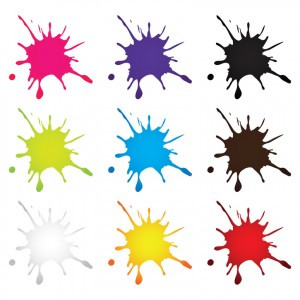 You’ve got big plans for your marketing materials, and you can’t wait to get the printing done, but what type of printing will be best for you? As with so many other questions that we face, the answer to that is “It depends…”
You’ve got big plans for your marketing materials, and you can’t wait to get the printing done, but what type of printing will be best for you? As with so many other questions that we face, the answer to that is “It depends…”
Let’s check out the advantages (and disadvantages) of both options so that you can make an informed decision as to what type of printing will best fit in with your plans.
The process – and the results
Offset printing makes use of a plate that transfers ink to a rubber sheet which in turn rolls the ink onto the surface you’re printing on. Digital printing doesn’t use a plate at all. But if quality matters to you, then offset printing is the best choice. After all, it’s the method that’s used to produce books, glossy magazines and all the best brochures and pamphlets.
Despite recent advances in digital printing, offset printing still produces the highest quality work. It also allows you to produce large print runs much more quickly and allows for the printing of larger sheets. Offset printing also allows you to choose from a greater variety of paper types as well as offering you greater versatility in your choice of inks. For example, you won’t be able to use metallic colours with digital printing. But the primary consideration when making the choice between digital printing and offset printing is price.
How many copies will you print?
If you’re printing less than 500 copies of an item, digital printing can work out cheaper, since the cost of having a plate made is taken out of the equation. You can get a perfectly acceptable printing job done and you simply pay a flat rate for each printed item.
But if you plan to do repeated runs of the same item or want to reach a larger audience, offset printing will ultimately result in considerable savings. Because the offset printing process is so rapid, printers are able to give you a much better per item rate – once you’ve paid the setup fees. You’ll also find that the more copies you order at a time, the lower the price per piece. This can quickly absorb the price of having the plate made and result in a lower overall cost for the print job.
Once the plate is made, it’s there for you when you want to do a repeat run, so next time you want a print run of 500 – 1000 or more, you get the savings that result from the easier printing process, and you don’t have to pay for the plate.
Is offset printing suitable for small businesses?
Although the number of copies you need to make in order to make offset printing viable may seem like a lot, you’ll be surprised at how quickly leaflets and brochures get used up. Plus, you can save on design costs if you’re able to design your materials so that they’re evergreen. As a result, many small businesses choose offset printing in order to save on their printing costs and get a better return on their investment.
Here at Local Leaflet Distributor (servicing the Gold Coast and Tweed Coast) we use off-set printing as often as we can to keep the cost down. Digital printers are only used for small orders, or for late print jobs. Take a look at our flyer printing prices here.
Digital printing for:
- Small print runs
- Inexpensive black and white printing.
- Low set-up costs
Offset printing for:
- Larger print runs
- Quality colour printing
- Lower cost per item
- More colours and a variety of paper types
Once you have your printing sorted and if you are looking to have your flyers delivered anywhere on the Gold Coast, Tweed Coast, Kingscliff down to Pottsville and Cabarita, then we can help out there too! Reliable riders, small family business and great rates make us the pick of the bunch! Leaflet distribution information and costs can be found on our website.

